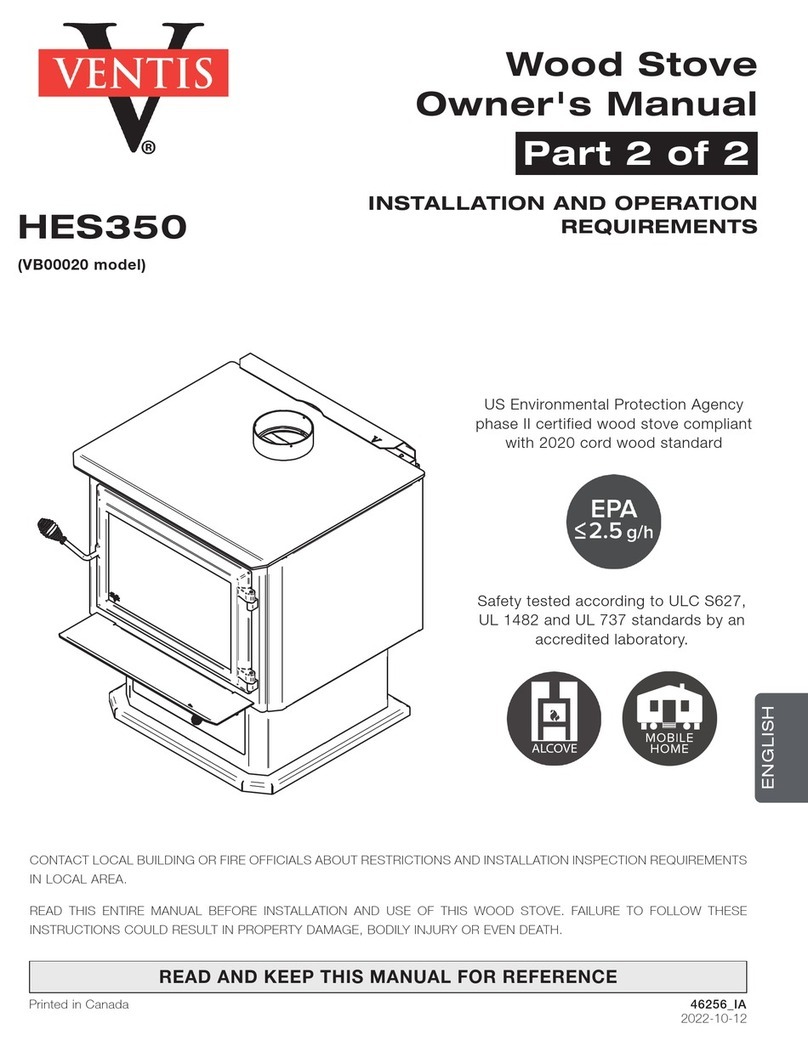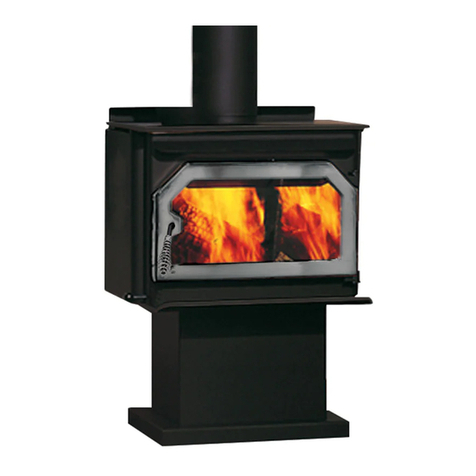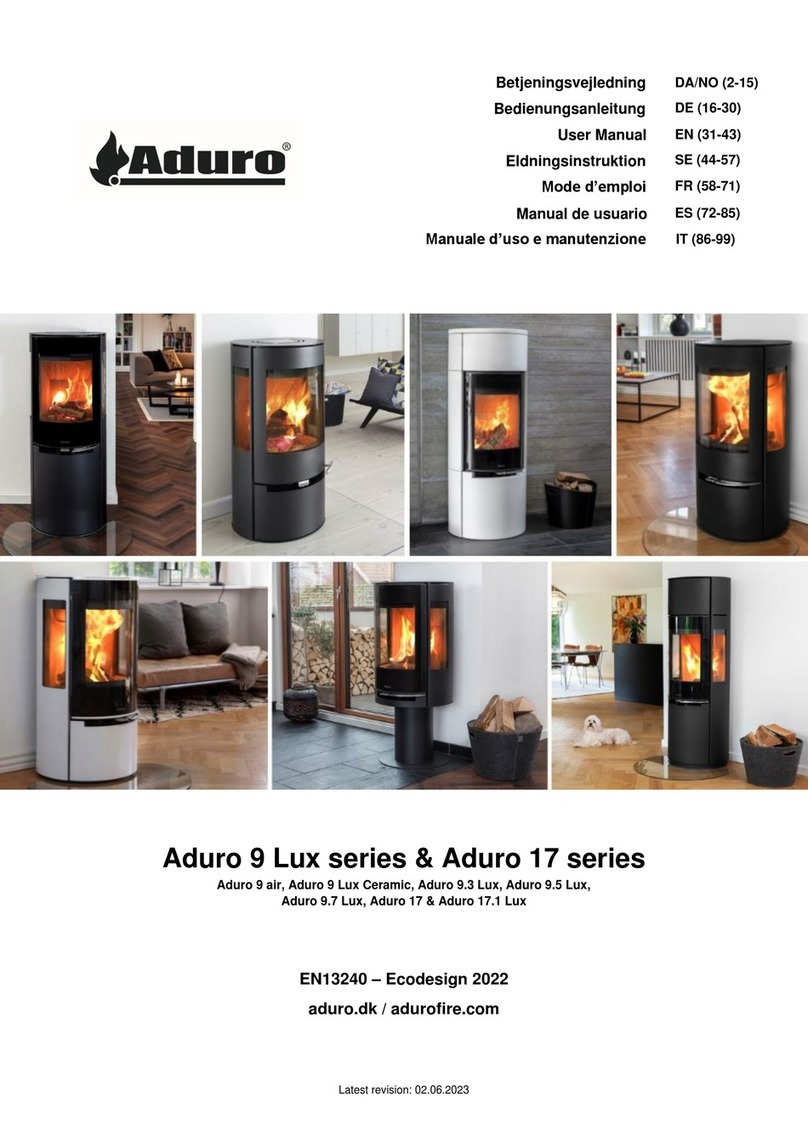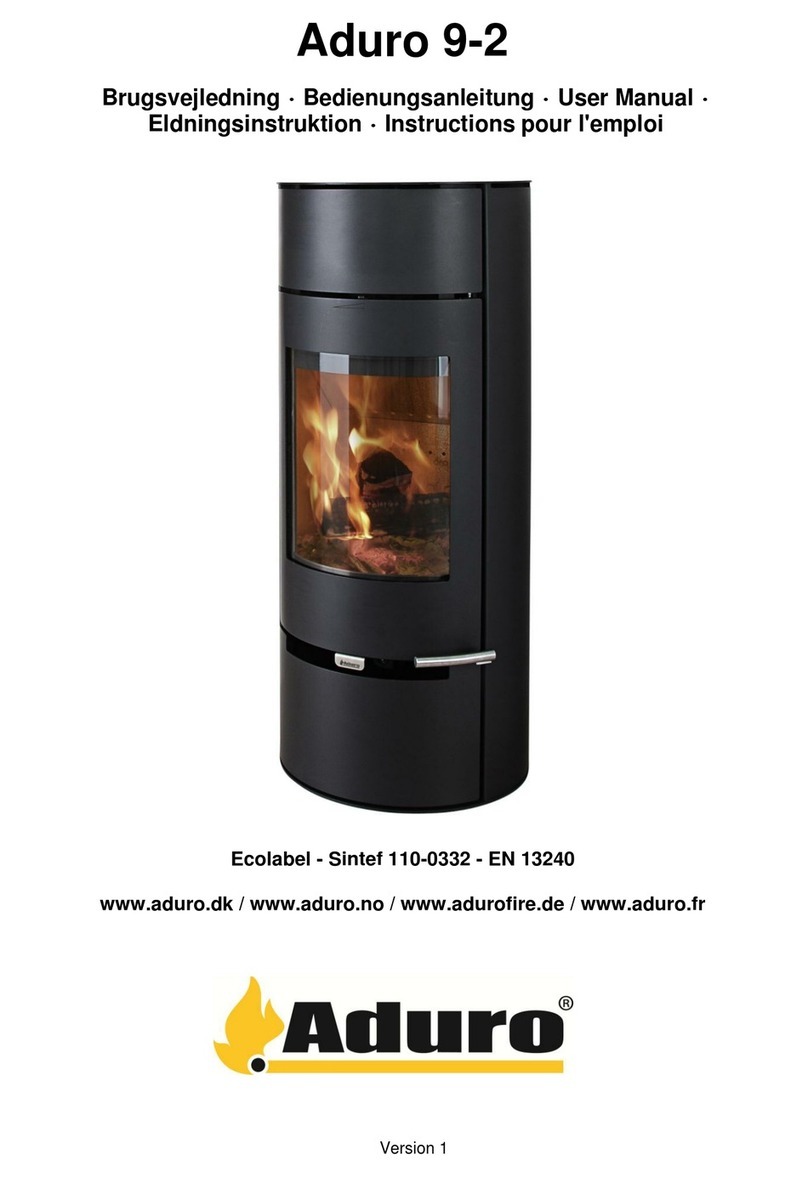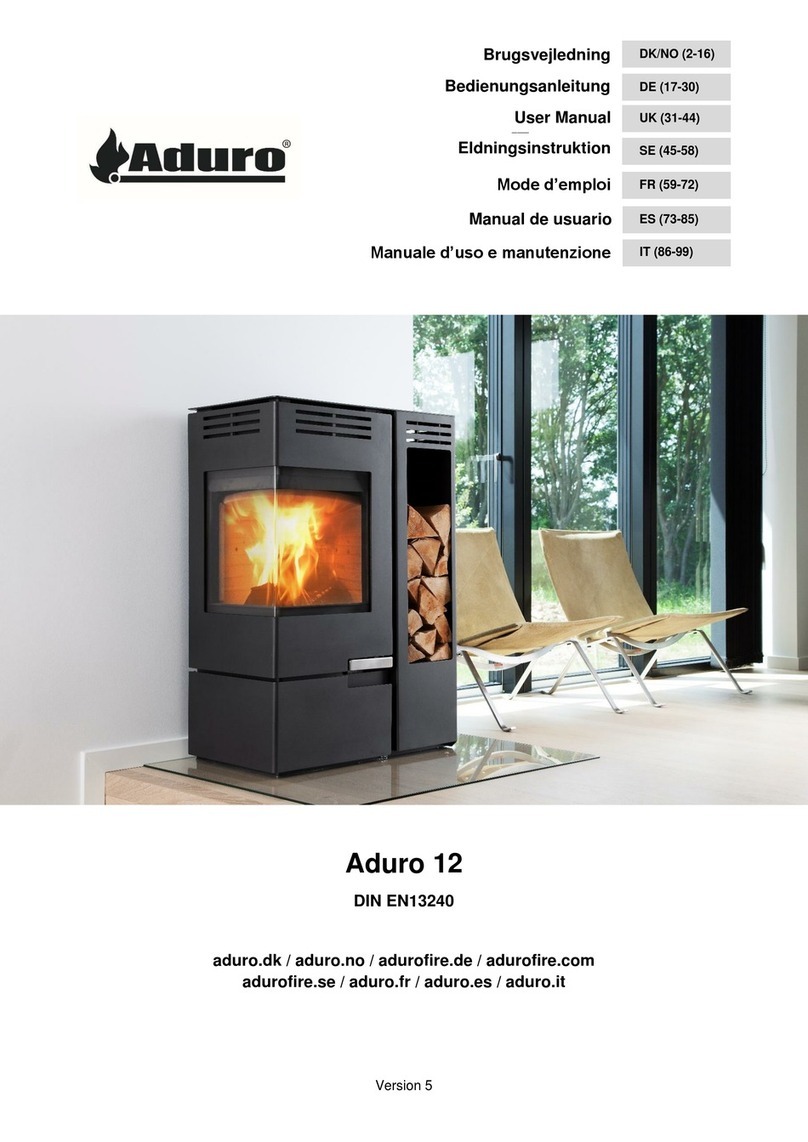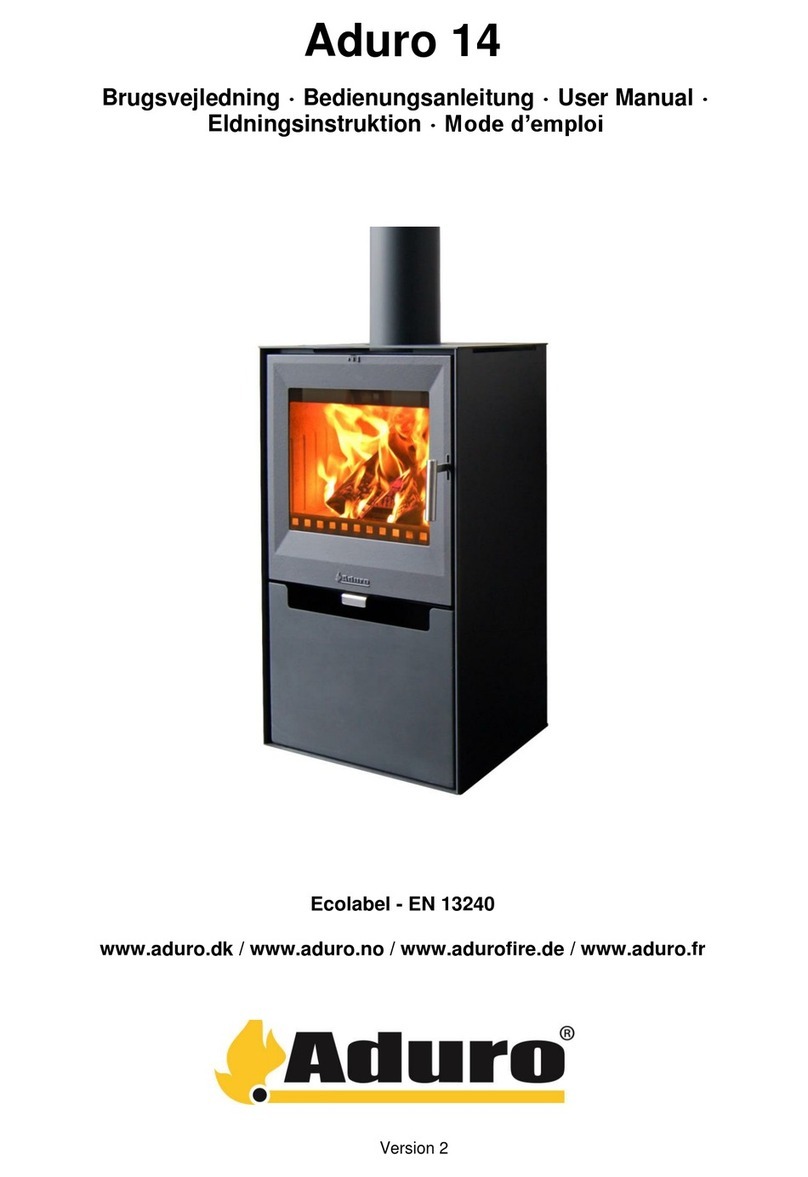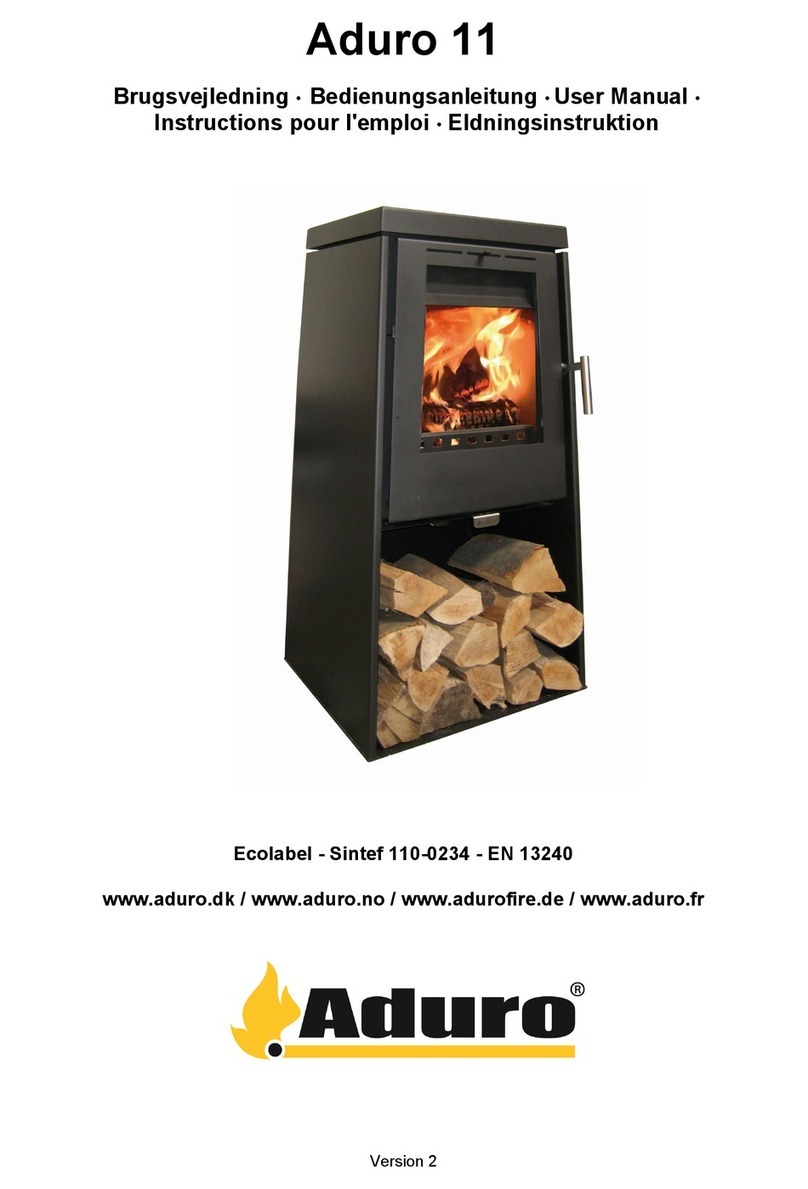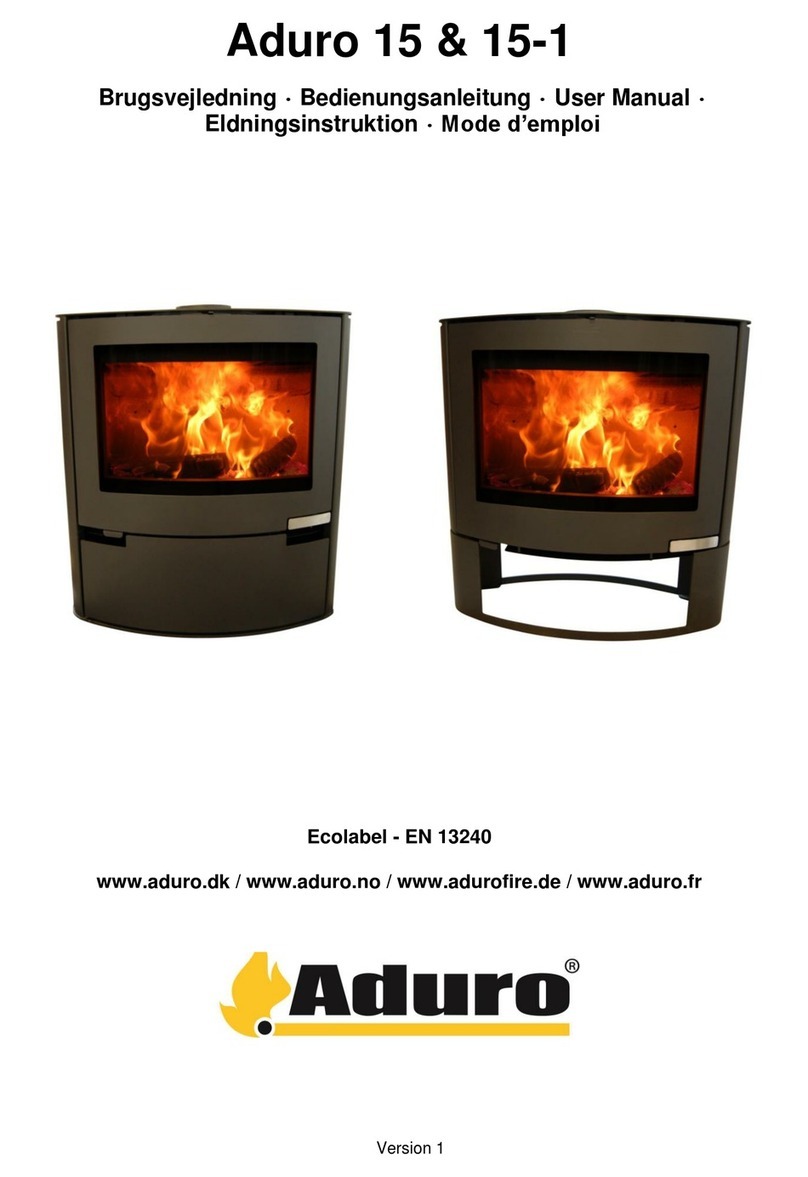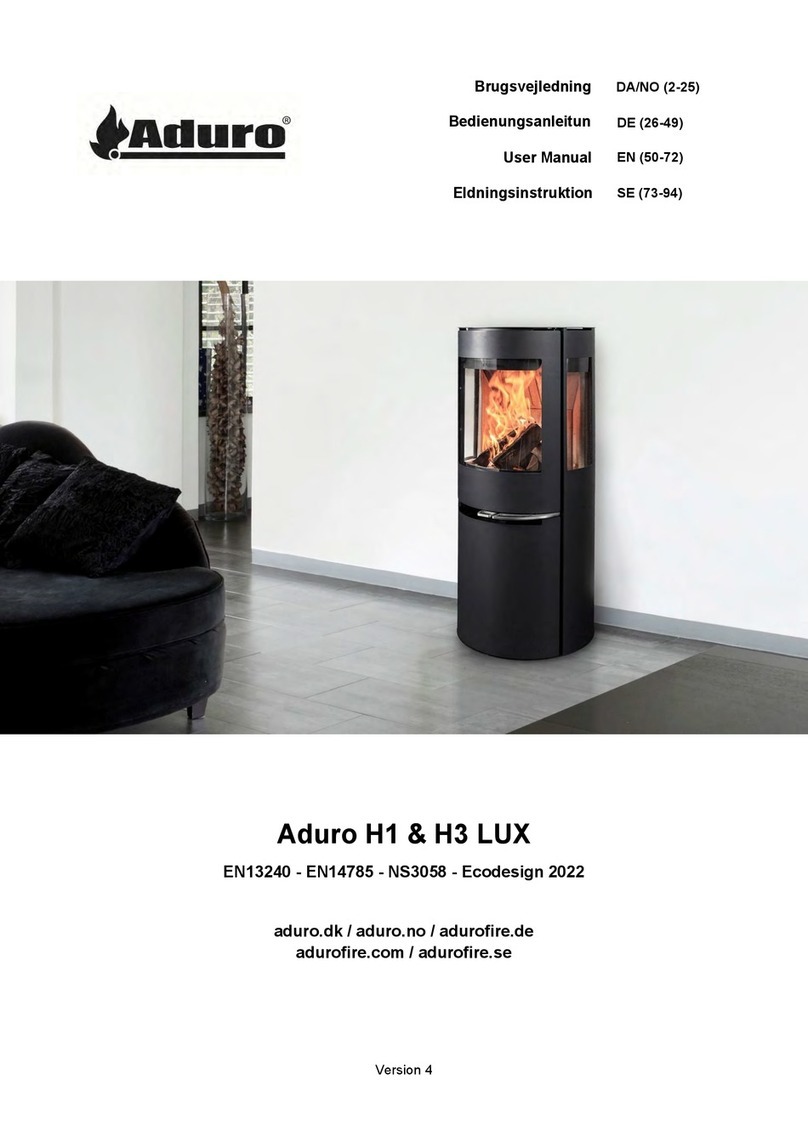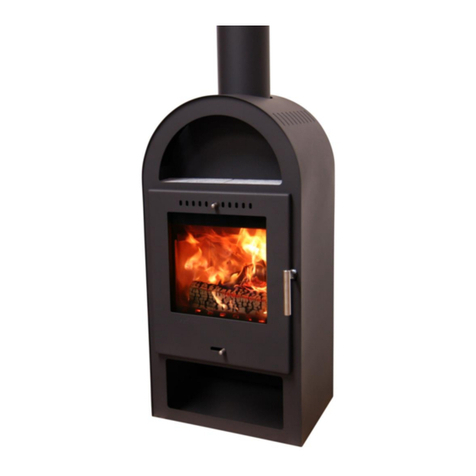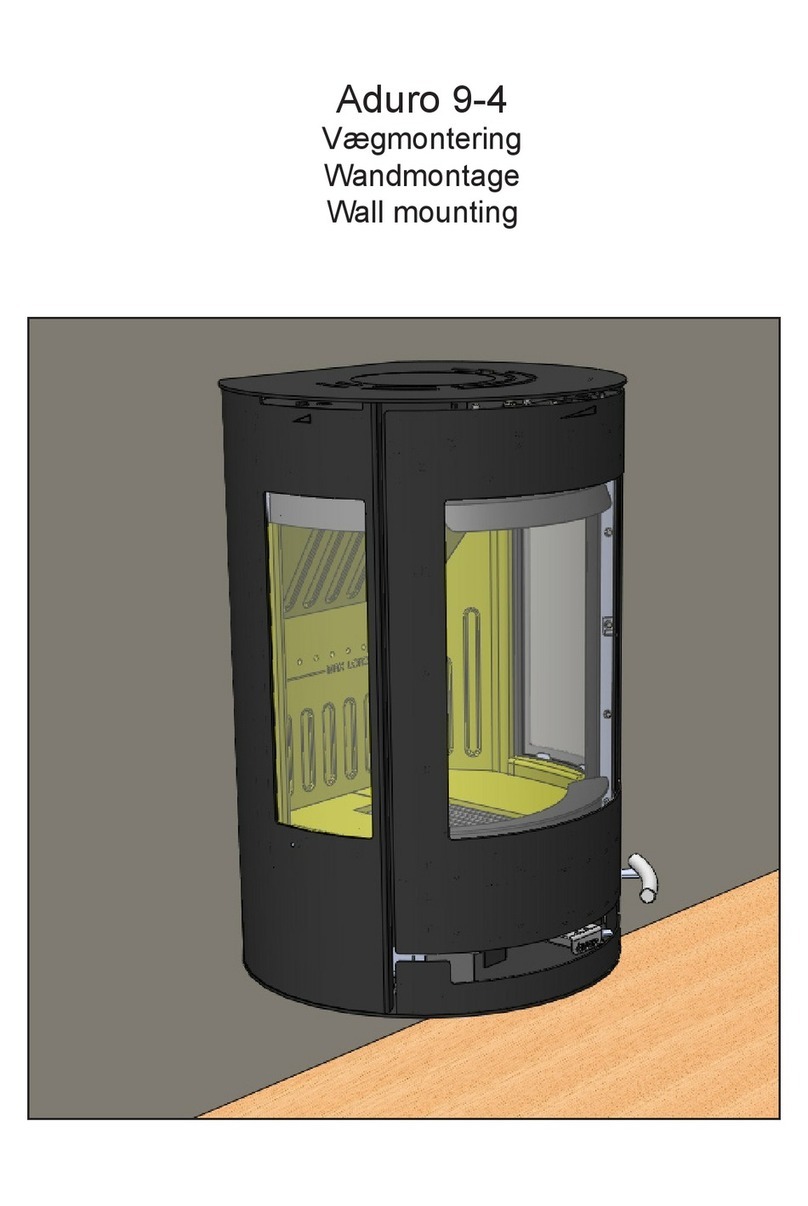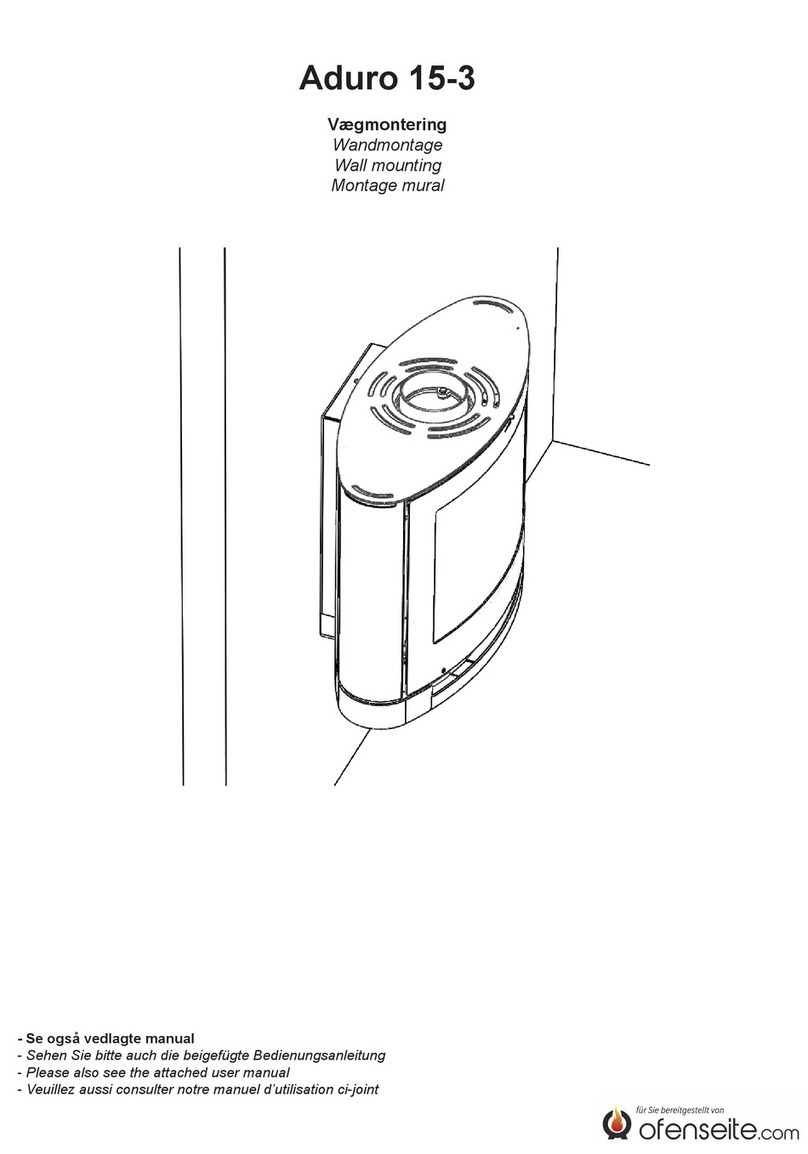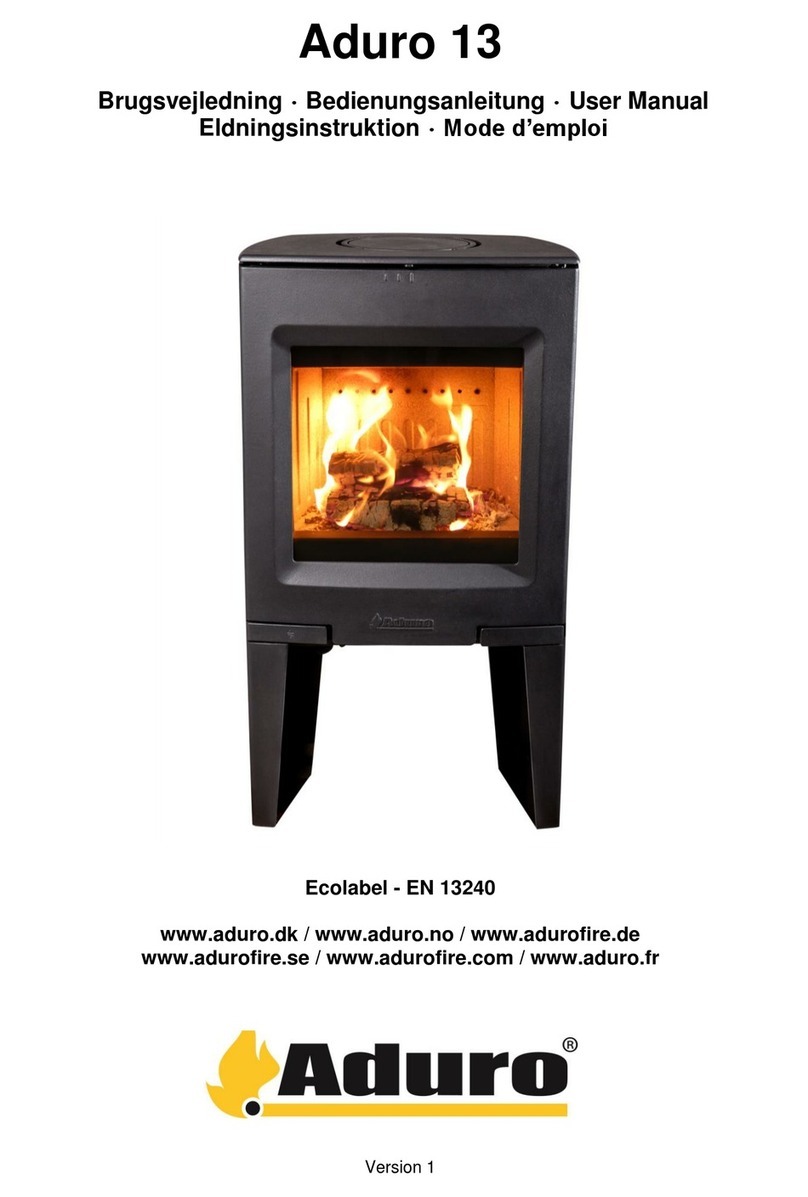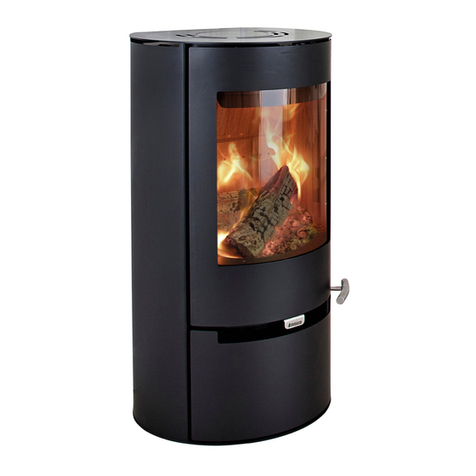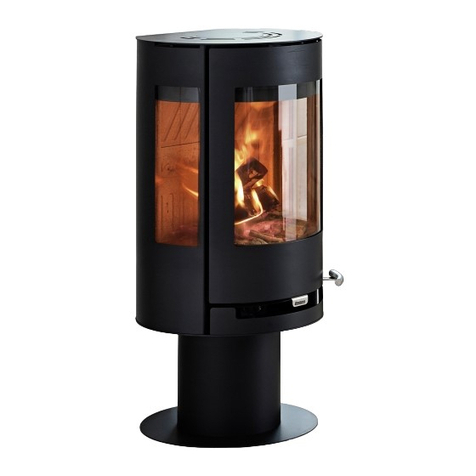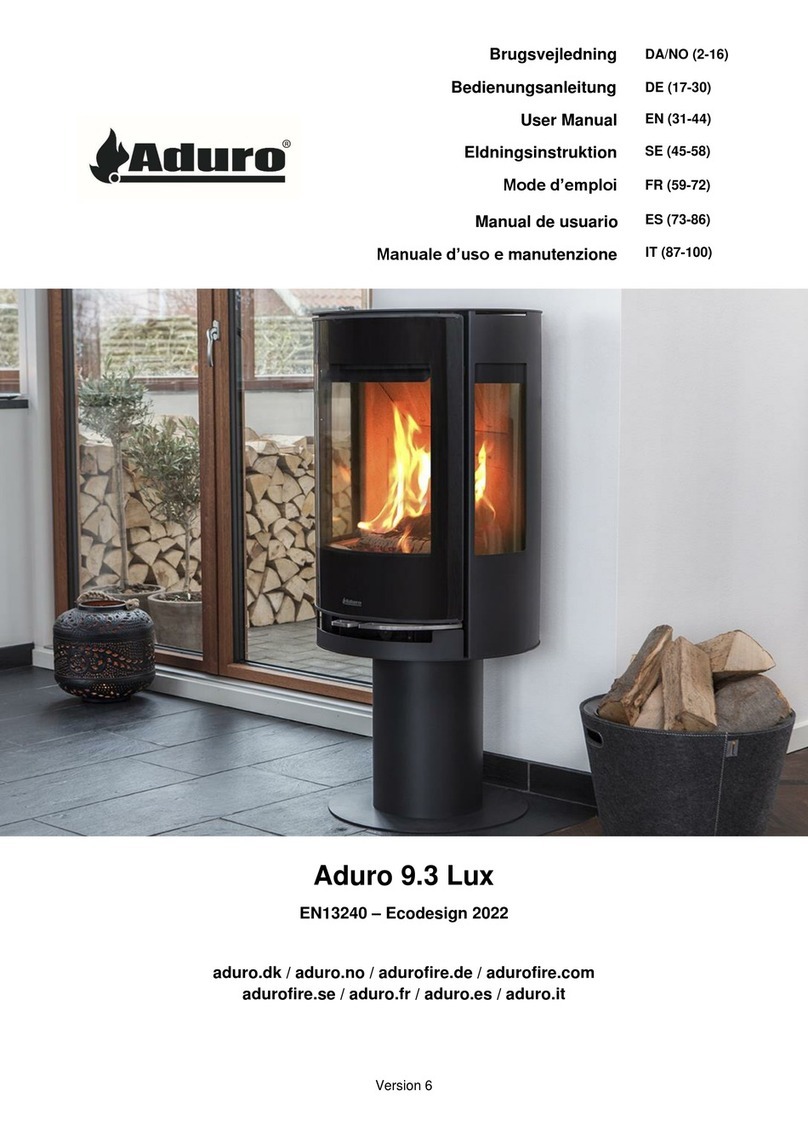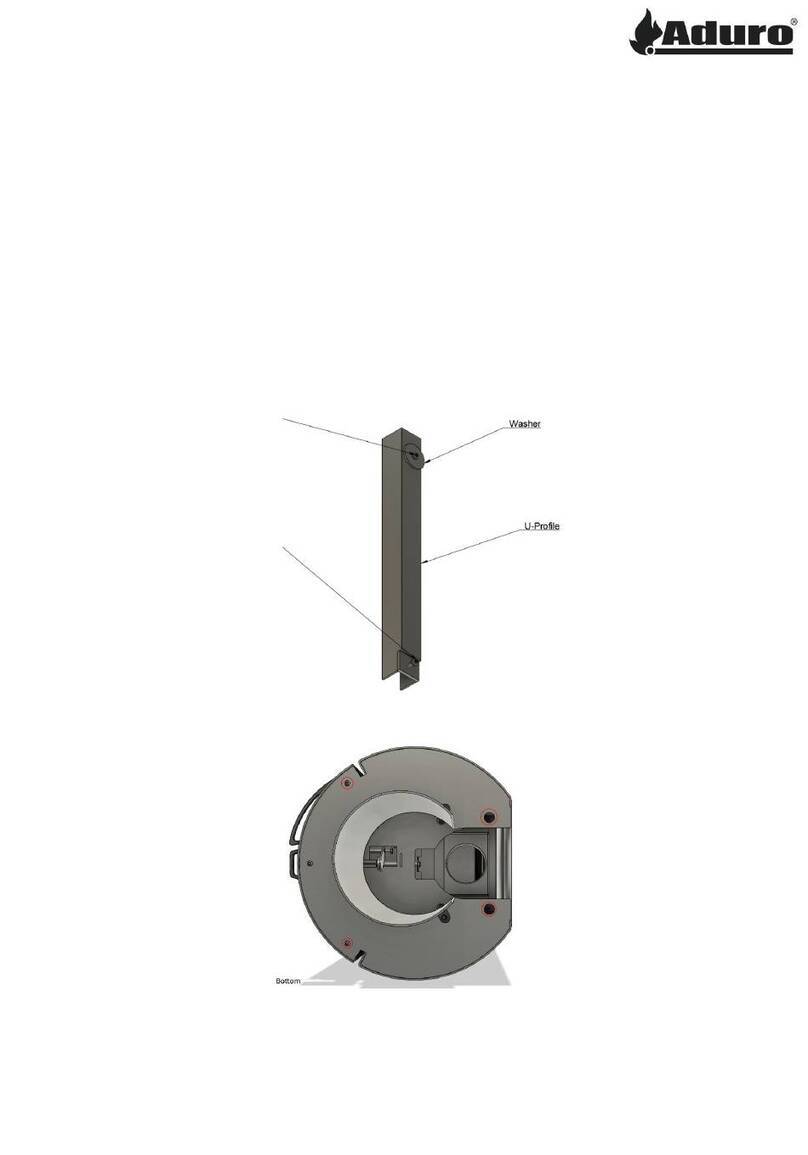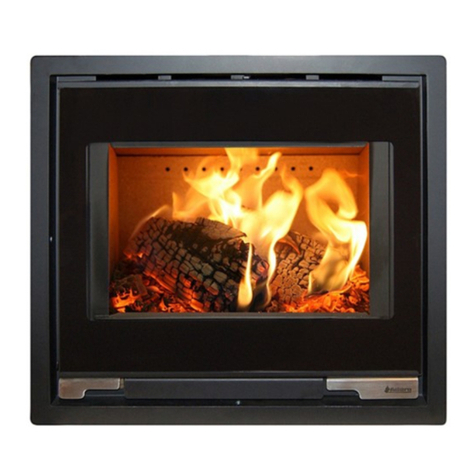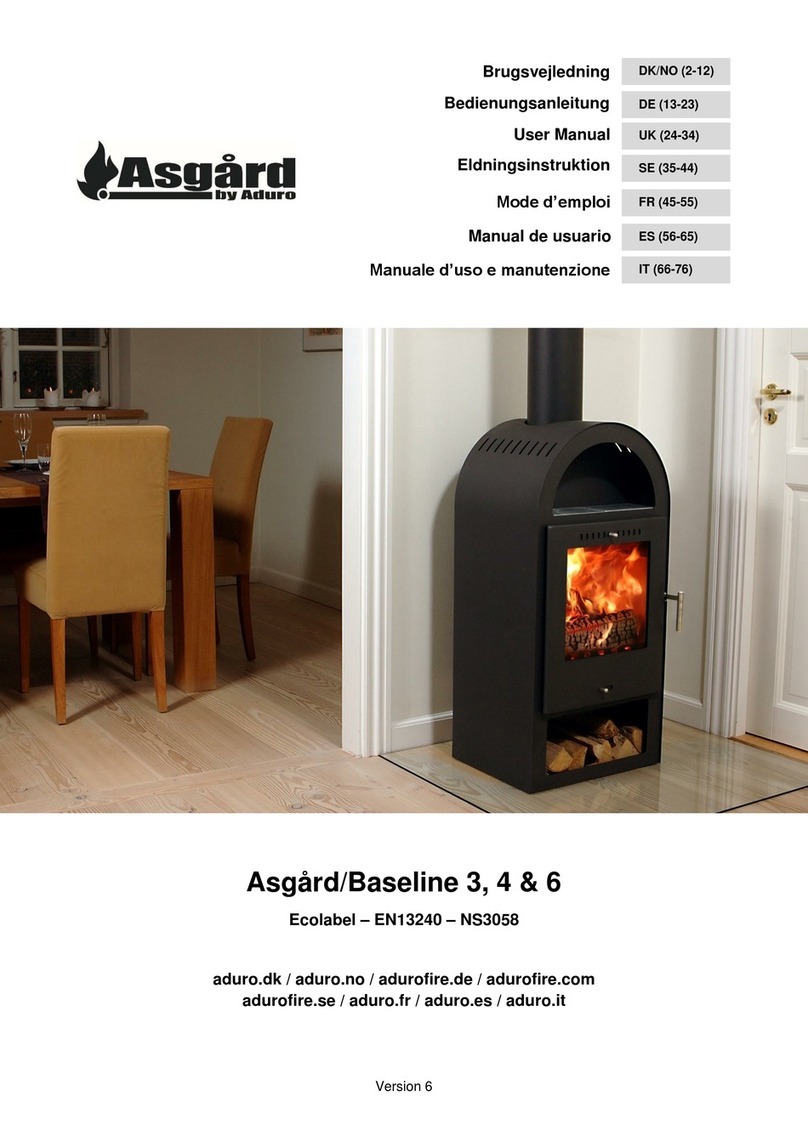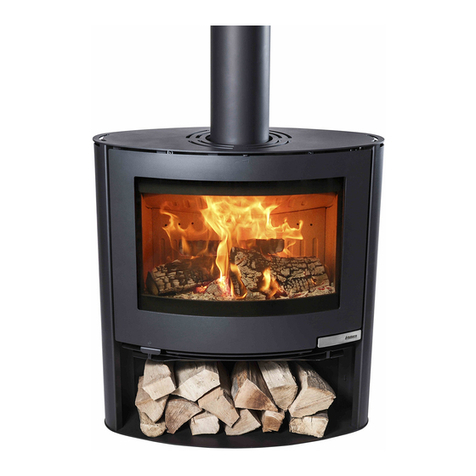automati is a tivated by pulling the primary damper out ea h time fresh wood is put in the stove. The
automati loses then the primary air gradually.
Regulation of the Aduro-troni ontrol
The ontrol is pre-set to allow primary air intake for the first 5 minutes. This setting has been used during
testing at the Danish Te hnologi al Institute using ‘standard’ sized logs and with optimum moisture ontent
of 17-20%. Standard size logs are approx. 30 m long and 10 x 10 m in thi kness. A standard himney was
also used for testing. In pra ti e, su h ir umstan es an differ, whi h is why the Aduro-troni ontrol an be
adjusted to your ir umstan es. If you want a slower intake of primary air: (e.g. for a slower flue draught,
larger sized wood or for longer intervals between stoking) Adjust the s rew on the front of the ontrol level
using a small s rewdriver to slow losure rate. If the s rew is turned to the right losing time is in reased and
if turned to the left losing time is redu ed.
3.9 Ventilation/fres air supply
In order for the wood burning stove to fun tion at optimum effi ien y, air is needed for the ombustion
pro ess. There must be suffi ient fresh air oming into the room ontaining the wood burning stove. In very
well-insulated houses, or houses with powerful ooker hoods and/or air onditioning systems, a va uum an
be reated around the stove, leading to smoke leakage and poor ombustion. In these ir umstan es, it
might be ne essary to open a window to provide air for ombustion and to equalize the va uum.
Alternatively, you ould fit an air vent in the room ontaining the wood burning stove.
4.0 T e c imney
Data for himney al ulation:
Wood
Flue temperature at [20 °C] 367
Chimney draught at testing power
[mbar]/[Pa] 0.12/12
Flue gas mass flow [g/s] 4,0
The optimum ombustion is a hieved at a onstant himney draught of 0.10 to 0.14 mbar measured in the
flue pipe above the stove. There are many fa tors that affe t the himney draught, in luding the outside
temperature, wind strength and surrounding buildings. If it is impossible to establish a suffi iently natural
himney draught, the himney an be fitted with a smoke extra tor. If the himney draught is too strong, a
damper an be fitted to regulate the himney draught. Conta t your lo al himney sweep for more advi e.
4.1 Inadequate draug t in t e c imney
If the himney is too short, leaks or is inadequately insulated, there may be problems with the himney
draught (let the himney sweep assess this). The draught should be approx. 0.10–0.14 mbar in order to
provide satisfa tory ombustion and prevent smoke leakage.
If the himney sweep judges the draught to be satisfa tory, but you still have problems lighting a fire, try
extending the fire lighting phase/using more thin pie es of kindling, so that the himney gets thoroughly
warm. The himney will not draw at optimum effe t until it is warm. The fire lighting phase an be prolonged
by using a lot of kindling and 1-2 firelighters. When a layer of embers has been formed, add 2–3 dry logs.
5.0 Maintaining and cleaning your wood burning stove
Gaskets
With time, the gaskets will wear, and, in order to avoid wild ombustion, they must be repla ed as required.
Glass
If the wood you burn is too moist, you will get soot stains on the glass pane. They an be easily removed
using a damp loth that you dip in old ash and rub on the sooty glass. Spe ial leaning agents are also
available to remove soot from glass.
Combustion hamber
The yellow tiles in the ombustion hamber eventually wear out and they should be repla ed when the
ra ks are more that 0.5 m. The durability of the tiles will depend on how often and how intensively the



